With one of the most easily recognizable logos in the world, Nike has been one of the top athletic brands in the world for decades.
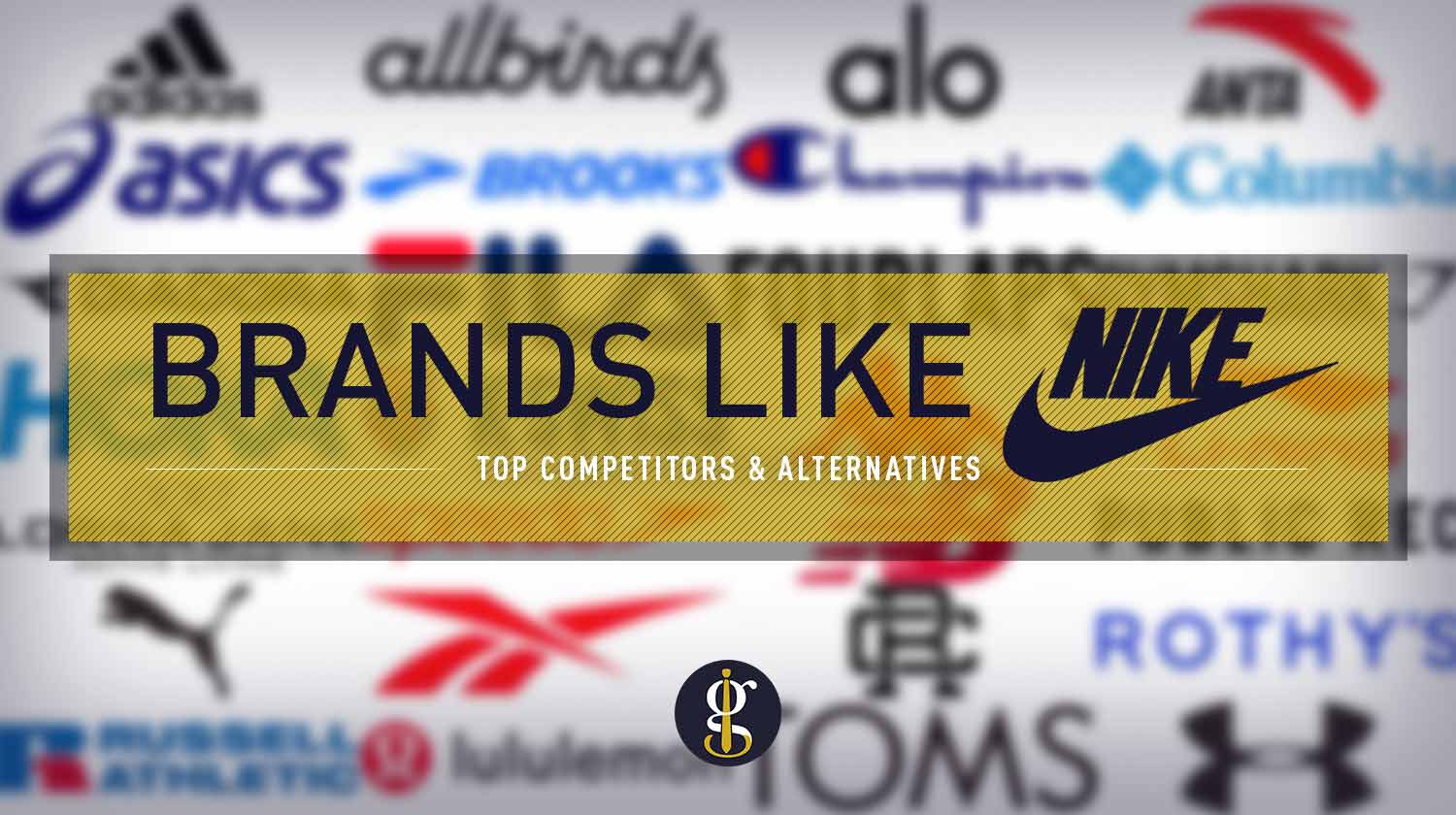
Since the company’s humble beginnings in 1963, the megabrand Nike has always focused on innovative technology in their shoe and athletic wear design. But this iconic company started out in a surprising way…
Part competitive analysis, part branded biography — this deep dive discusses Nike’s storied history, influence on Popular culture, top Nike competitors, notable Nike athletes, sub brands & a handful of frequently asked questions about the company.
You ready? Let’s take it back with a little Nike history lesson.
Subscribe to The Gentleman Within Podcast.
Nike History: From Track Meets to Store Fronts
The brand known as Nike began with an investment of a few hundred dollars by a man named Philip H. Knight (Nike’s founder) who had just spent a few months traveling around Japan after finishing up business school.
Once a track runner at the University of Oregon, Knight saw a business opportunity that he couldn’t resist: importing Japanese-made running shoes back to his Beaverton, Oregon, hometown to compete with the German brands then leading the market.

He invested in 200 pairs of shoes from the Onitsuka Tiger Company and named his fledgling startup Blue Ribbon Sports, also called BRS. After the first year selling the shoes at various track meets nearby, Knight partnered with William Bowerman, his former track coach.
Bowerman had been working with his athletes to make changes in shoe designs to improve their functionality, and this spirit of innovation and design became the heart of the company that would eventually become Nike.
Ready to Grow
Once partnered, BRS’s quick success with Bowerman’s first customized shoe design called the Cortez followed. Within three years, the company expanded to California and then made the leap to the East Coast within five years.
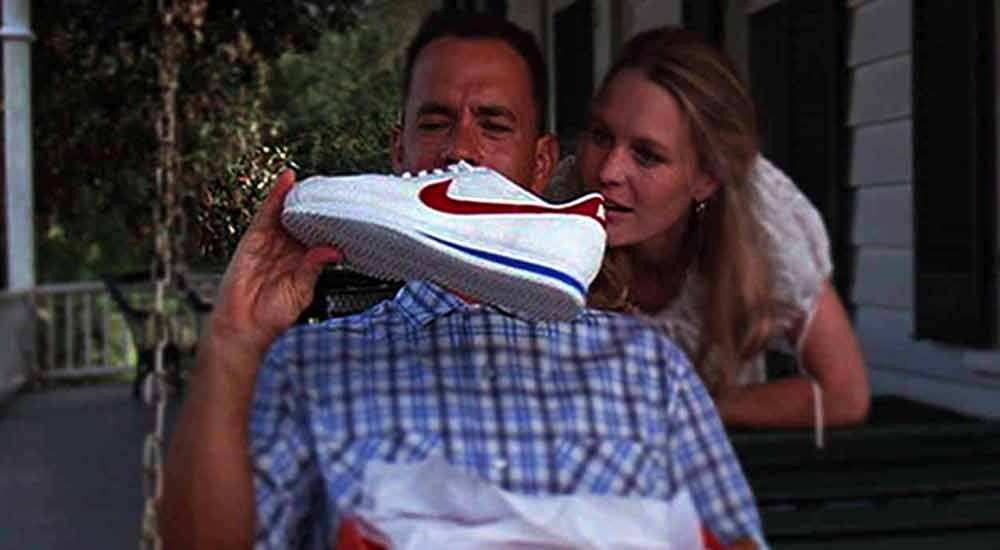
At the end of a decade in business, BRS had grown exponentially with multiple stores and bringing in almost $300,000 per year. However, Knight knew the company was poised for explosive growth if only BRS had an infusion of capital needed for production.
So in 1971, Knight secured funding from a Japanese trading company, Nissho Iwai Corporation, and the company began its transformation.
Swooshing into Nike
Once the injection of cash made the production of its own products possible, BRS first introduced the Swoosh, now one of the most well-known logos around the world. At the same time, Knight transformed the company by changing the name to Nike.
Using the Greek goddess of victory as the company namesake marked the start of the sportswear giant, initially putting both the Swoosh and the name Nike on their own soccer shoe.

This first year the new brand Nike under BRS grossed $1.9 million, and the company began to create huge marketing campaigns to connect the athlete-centered brand to the athletes themselves.
As Nike promoted their products to the 1972 US Olympic Trials athletes, the company continued to grow and expand operations to Canada and then Australia in 1974.
Promotions Fueled Growth
As Bowerman’s innovations in shoe designs continued to catch on, Nike’s popularity as a brand accelerated among professional athletes who could appreciate the thoughtful technology and design of Nike’s products.
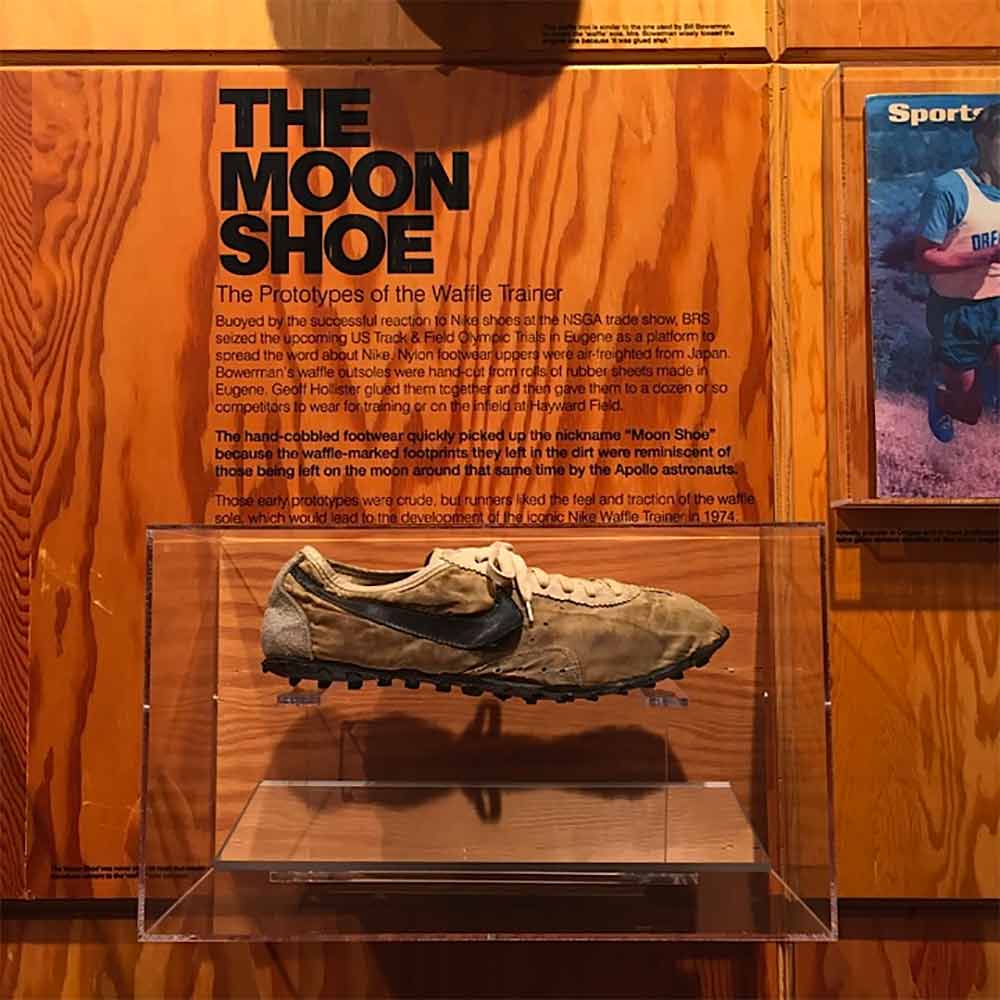
In the 1970s, even the casual athlete began to see how lightweight, well-designed running shoes like the popular waffle-tread Moon running shoe would be beneficial. Nike’s aggressive promotion, pairing their brand with well-known athletes and programs, further contributed to the company’s meteoric rise in popularity.
Early adopters of the Nike brand, like tennis giants Jimmy Connors and John McEnroe, helped provide visibility of the growing brand.
Expansion into Related Markets
By this time, BRS was producing their athletic shoes in multiple overseas plants as well as in the US and was selling almost half of all running shoes bought at that time. In 1979, BRS officially became Nike Inc., blending the branding with the company name.
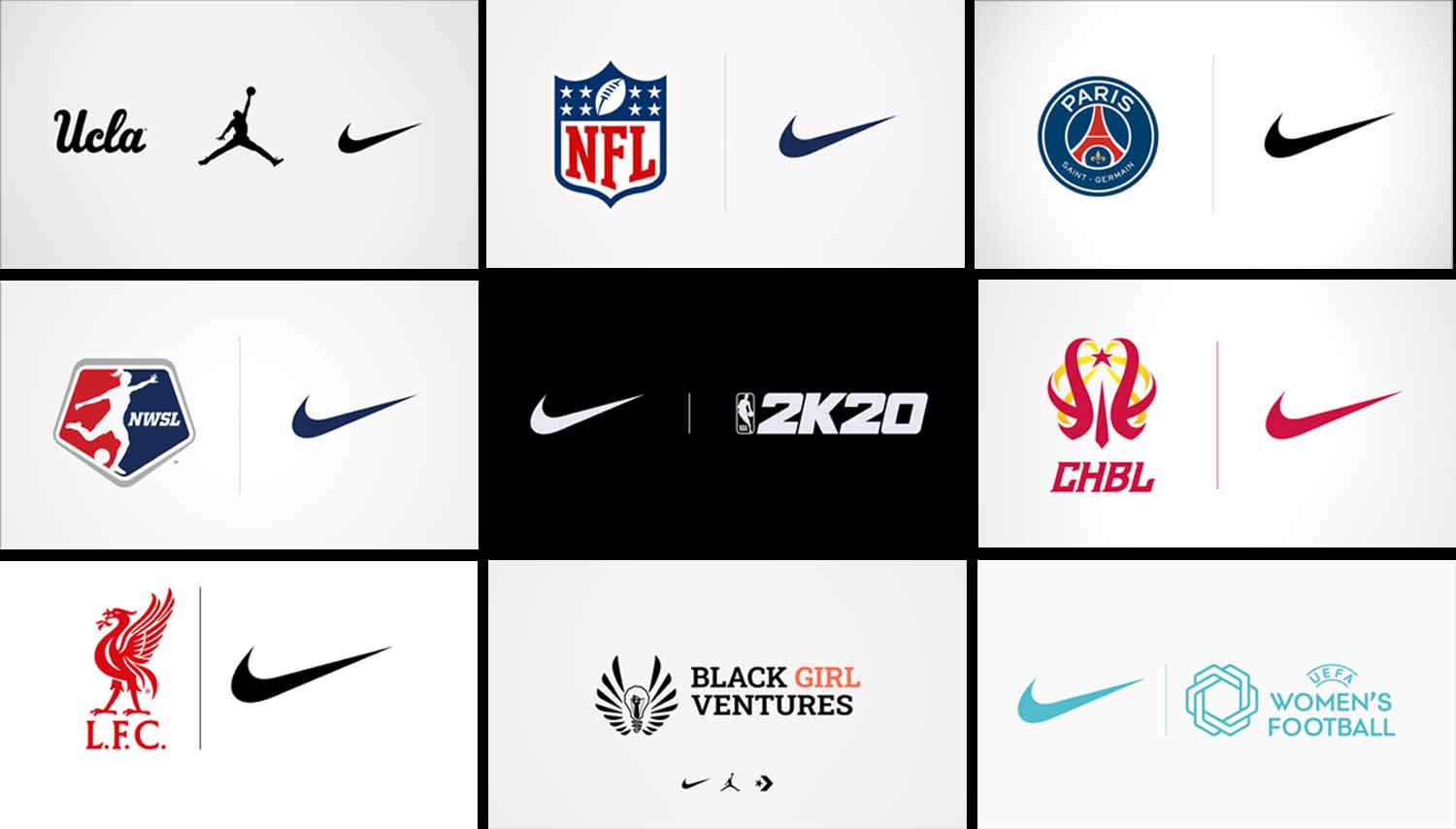
They also built their stunning world headquarters compound in Beaverton, Oregon, where Nike still is today. Nike’s expansion also included a jump into the athletic apparel business as well as expanding into the children’s shoe market at this time.
Continuing their partnership with top athletes, Nike is the uniform and apparel provider for hundreds of top teams, clubs, and organizations around the world, further fueling the armchair athlete’s love of the iconic brand. What started with a $35 ($220 adjusted for inflation) logo — today, the Nike brand is worth over $240 billion.
Quick note: If you’re enjoying this analysis on top Nike competitors, then you’ll probably find my other writing on all things style & self-development useful. Each week, I share updates, style tips and other things not shared on the blog through my free email newsletter.
To join now, just enter your email address below and click “Get Updates!”
33 Top Nike Competitors
While Nike’s dominance in the shoe and sports apparel markets is proven, many excellent alternatives to Nike are available to consumers.
» Readers’ Favorite: Highlighting the Nike Killshot 2 (A Sneaker of Internet Legend).
Since the Just Do It company has branched out into many market segments outside of athletic shoes, a variety of sports apparel and equipment companies have developed into Nike rivalries within their specific niches. You can say they’re Just Do[ing] It, giving Nike a run for their money.
A few of the larger companies on this list, like Adidas, have become one of (if not the top) Nike’s top competitors as well. Let’s break down the 33 top alternatives to Nike as we reveal the focus of each brand and how they compare in the race to beat Nike — broken down in alphabetical order.
1. Adidas
- CEO: Kasper Rorsted
- Founded: 1924
- Headquarters: Herzogenaurach, Germany
- Employees: 62,285
- Est. Annual Revenue: $27.3 Billion
- Exchange Listed On: OTC Markets (Ticker: ADDYY)

As one of the Nike top competitors in the world, Adidas is just as well-known worldwide for its shoes, apparel and equipment. But Adidas is also well known for its athleisurewear and is easily recognizable for its ‘three stripes” logo in use since 1952.
Second in the world only to Nike, the German Adidas brand is the most popular brand in Europe. Founded as a spiked-shoe company initially, now Adidas is just as well known for their clothing as well as their shoes.
Once the most popular shoe company before Nike snagged that title, Adidas is highly competitive in shoes, workout gear, professional sports jerseys as well as all aspects of athletic equipment in the global market.
2. Allbirds
- Co-CEO: Joey Zwillinger
- Founded: 2015
- Headquarters: San Francisco, California
- Employees: 371
- Est. Annual Revenue: 259.5 Million
- Exchange Listed On: NASDAQ (Ticker: $BIRD)

This eco-friendly running shoe brand focuses on sustainability, but they are one of the alternatives to Nike since they do a great job at providing a quality product within their niche.
Allbirds shoes are made entirely of merino New Zealand wool, a unique approach to footwear that mirrors Nike’s initial philosophy of customizing shoe technology to fit their specific corporate vision.
This Kiwi company has expanded into sustainable sportswear fashion as well, making them a great alternative for fitness lovers that also rank eco-friendly as a must for their gear. Allbirds is definitely one to watch in the coming decade.
3. Alo Yoga
- President & CEO: Danny Harris
- Founded: 2007
- Headquarters: Los Angeles, California
- Employees: 200
- Est. Annual Revenue: 89.1 Million
- Exchange Listed On: Not Publicly Traded

This fast-growing athleisurewear online brand from LA doesn’t just put out crave-worthy workout pieces. Alo is also a master at marketing their brand by dominating the social conversation surrounding their name with a focused social media strategy, similar to the strong marketing campaigns that built Nike’s brand name.
Initially only available online, Alo’s beautiful studio-to-street yoga pieces can now be found in luxury and sporting goods stores across the world. Devotees of the brand flock to it for its authenticity, visible connection to its core yoga customer, and quality products.
4. Anta Sports
- President & CEO: Ding Shizhong
- Founded: 1991
- Headquarters: Jinjiang City, Fujian Province
- Employees: 47,000
- Est. Annual Revenue: 5.4 Billion
- Exchange Listed On: OTC Markets (Ticker: $ANPDY)

As China’s largest sports brand, Anta is the 2nd largest athletic gear company in China behind Nike, just recently surpassing Adidas in sales. Largely still unknown in the US, Anta markets its affordable sportswear to the masses and over 30% of its sales are made online.
A popular “Made in China” brand that has appealed to younger buyers more recently, Anta was recently named as the first Chinese International Olympic Committee uniform supplier. Anta is one of the brands like Nike that offers shoes, equipment and apparel at many price points attracting buyers that want trendy but reliable athletic gear.
5. Asics
- President & CEO: Motoi Oyama
- Founded: 1949
- Headquarters: Kobe, Hyōgo Prefecture
- Employees: 8,904
- Est. Annual Revenue: 3.7 Billion
- Exchange Listed On: OTC Markets (Ticker: $ASCCY)

Japanese footwear brand Asics started off as the Onitsuka Company that manufactured its famous “Tiger” shoe with such quality design that it was the actual model that inspired Nike’s founder McKnight to begin importing athletic shoes.
While Nike competitors like Asics now also produce quality workout clothes for men, women, and children as well as beautiful athleisurewear options, Asics’ real bread and butter is its shoe line. No longer commanding a large market share, Asics footwear is consistently rated highly by athletes across the board.
6. Brooks Running
- President & CEO: Jim Weber
- Founded: 1914
- Headquarters: Seattle, Washington
- Employees: 500-1k
- Est. Annual Revenue: $850 Million – 1 Billion
- Exchange Listed On: Not Publicly Traded

This high-end running shoe company is quickly becoming one of the Nike top competitors. Recently narrowing their focus to include less gear and more depth in footwear, Brooks now is known as one of the best running shoes.
This brand is commonly found in niche running retail outlets rather than in bigger box style athletic gear outfitters, and its high-quality running shoes are continuing to grow in popularity.
Two Brooks silhouettes, the Ghost 13 and Adrenaline GTS 21 earned spots on the list of the top 10 selling sneakers in 2021 making Brooks a worthy competitor to the goliath that is Nike.
7. Champion
- President & CEO: Stephen B. Bratspies
- Founded: 1919
- Headquarters: Winston-Salem, North Carolina
- Employees: 5,000
- Est. Annual Revenue: $332 Million
- Exchange Listed On: Not Publicly Traded

One of the brands like Nike that can be found at retailers around the world is Champion. This sportswear and athleisurewear brand was the first mega-brand before Nike and Adidas, providing the world with athletic gear since 1919 when it was known as the Knickerbocker Knitting Company.
The inventor of the “hoodie,” Champion now is loved as a brand that provides iconic jerseys for professional and amateur teams as well as being an old-school brand that produces classic designs. Champion’s focus is not on cutting-edge design or technologies, but it is a popular brand with older and younger customers alike for its classic stylings of basic gear and apparel.
8. Columbia Sportswear
- President & CEO: Timothy Boyle
- Founded: 1938
- Headquarters: Portland, Oregon
- Employees: 6,511
- Est. Annual Revenue: $2.9 Billion
- Exchange Listed On: NASDAQ (Ticker: $COLM)

This sportswear brand is loved by outdoors enthusiasts of all kinds and its headquarters is also located in Beaverton, Oregon, just like Nike. Columbia manufactures apparel and accessories as well as other sporting gear and equipment, but it originally got into the athletic gear game with its groundbreaking waterproof, breathable jackets introduced in the 1960s.
9. Diadora
- President & CEO: Enrico Moretti Polegato
- Founded: 1948
- Headquarters: Caerano di San Marco, Italy
- Employees: 285
- Est. Annual Revenue: $55 Million
- Exchange Listed On: Not Publicly Traded

A popular Italian sportswear brand, Diadora has expanded its offerings from its initial product, a hiking boot in the 1940s, to now include a full array of general sports apparel and equipment.
Diadora manufactures its products in the US, Australia, India and Hong Kong and is a sponsored brand for some Brazilian soccer clubs and players. This Italian company offers beautifully designed athletic wear as well as competitive running shoes.
10. FILA
- President & CEO: Keun-Chang Yoon
- Founded: 1911
- Headquarters: Seoul, South Korea
- Employees: 5-10,000
- Est. Annual Revenue: $1-5 Billion
- Exchange Listed On: Korean Stock Exchange (Ticker: $KRW)

Another Italian powerhouse sportswear company, FILA started out as a clothing company but eventually branched out to include athletic shoes.
Today, this company is over a hundred years old, and its FILA shoes, sports gear and apparel can be found in 11 countries around the world. FILA clothing, shoes and gear are made for the casual, active person as well as the professional athlete.
11. Fourlaps
- Founder & CEO: Daniel Shapiro
- Founded: 2016
- Headquarters: New York, New York
- Employees: 5
- Est. Annual Revenue: $600k
- Exchange Listed On: Not Publicly Traded

A New York-based company that focuses on sustainable practices as well as innovative technologies and designs, Fourlaps is rocketing to popularity in the sportswear world. Offering up beautiful and smart designs for men and women, Fourlaps is a premium athletic wear brand developing a huge following.
12. Gymshark
- CEO: Ben Francis
- Founded: 2012
- Headquarters: Solihull, England
- Employees: 500-1,000
- Est. Annual Revenue: $100-500 Million
- Exchange Listed On: Not Publicly Traded

Relatively new, UK-based Gymshark’s rapid rise in popularity is due in part to its founder’s use of social media and influencers to drive product awareness and interest.
Gymshark’s online presence continues to be the main distribution channel for this up-and-coming Nike competitor. Gymshark now offers all kinds of sportswear, gear and accessories. The 20-year-old company is now worth over a billion British pounds.
13. Hoka One One
- CEO: Nicolas Mermoud
- Founded: 2009
- Headquarters: Goleta, California
- Employees: 100-250
- Est. Annual Revenue: $100-500 Million
- Exchange Listed On: Not Publicly Traded

Founded in 2009 as a running shoe company, Hoka is a beloved quality running shoe brand that many top runners around the world swear by.
Hoka only offers high-end running shoes, so a Nike vs Hoka competition would prove Nike as the winner, but Hoka devotees love the unusual philosophy of the shoe company that creates runners with extra padding rather than less like other brands use.
14. Kappa
- CEO: Franco Spalla
- Founded: 1967
- Headquarters: Torino, Trentino-Alto Adige
- Employees: 250-500
- Est. Annual Revenue: $100-500 Million
- Exchange Listed On: Not Publicly Traded

This Italian brand has been around for over 100 years, but what differentiates it from other Nike competitors is that Kappa focuses on sports-influenced streetwear. Kappa’s classic designs have an Italianate flair and are a popular choice for those who want to look sporty without getting sweaty.
15. K Swiss
- Chairman & CEO: Truman Kim
- Founded: 1966
- Headquarters: Westlake Village, California
- Employees: 500
- Est. Annual Revenue: $126 Million
- Exchange Listed On: NASDAQ (Ticker: $KSWS)

Primarily a tennis brand, K Swiss has used Nike’s marketing playbook in recent years to grow the appeal of this 50-year-old company. An American company with a European flair, styles from K Swiss attract serious tennis players equally with fashionistas.
16. Li-Ning
- Co-CEO: Kosaka Takeshi
- Founded: 1990
- Headquarters: Beijing, Beijing Municipality
- Employees: 3,928
- Est. Annual Revenue: $2.2 Billion
- Exchange Listed On: OTC Markets (Ticker: $LNNGY)

A Chinese sportswear company, Li-Ning was started by a former gymnast in 1990. Now a huge presence in China, Li-Ning has had popular NBA all-stars like Shaquille O’Neal and Dwayne Wade rep the brand’s athletic shoes and gear.
17. Lorna Jane
- CEO: Bill Clarkson
- Founded: 1990
- Headquarters: Brisbane, Queensland
- Employees: 2,000+
- Est. Annual Revenue: $142.3 Million
- Exchange Listed On: Not Publicly Traded

An Australian brand, Lorna Jane prolifically pumps out huge numbers of fresh and trendy designs for its legions of female sportswear devotees every month.
Lorna Jane is loved for its athleisurewear and athletic apparel and gear that is popular around the world, even famously selling one pair of their popular leggings every 27 seconds back in 2014.
18. Lululemon
- CEO: Calvin McDonald
- Founded: 1998
- Headquarters: Vancouver, British Columbia
- Employees: 25,000
- Est. Annual Revenue: $5.9 Billion
- Exchange Listed On: NASDAQ (Ticker: $LULU)

Only a few years old, Lululemon is the premier yoga clothing and athleisurewear company in the US and around the world. With its tight focus on the yoga lifestyle, Lululemon is growing exponentially every year and is a strong Nike competitor within this market niche.
19. New Balance
- CEO: Joe Preston
- Founded: 1906
- Headquarters: Boston, Massachusetts
- Employees: 6,000+
- Est. Annual Revenue: $4.5 Billion
- Exchange Listed On: Not Publicly Traded

This running shoe company produces its shoes in the US, so its costs are higher. But runners worldwide flock to the New Balance brand for its superior quality and design.
As Nike and Adidas competitors go, New Balance is gaining devotees every year and is likely to overcome them as a top running shoe company in the future.
20. On-Running
- Founder & CEO: Oliver Bernhard
- Founded: 2010
- Headquarters: Zurich, Switzerland
- Employees: 900
- Est. Annual Revenue: $459 Million
- Exchange Listed On: NYSE (Ticker: $ONON)

On, often referred to as On Running is an athletic shoe and performance sportswear company originating in the Swiss Alps that designs and markets sports clothing and running shoes.
As of 2019, the company held 40% of the running shoe market in Switzerland and 10% in Germany. And according to market research firm NPD, On currently owns 6.6% of the performance running shoe category in the United States.
Their shoes feature the first patented cushioning system which activates only when you need it, during the landing. In 2019, Swiss Tennis legend, Roger Federer became a shareholder in On AG and at the end of 2021, On filed for IPO raising approximately $746 million.
21. Public Rec
- CEO: Zach Goldstein
- Founded: 2015
- Headquarters: Chicago, Illinois
- Employees: 28
- Est. Annual Revenue: $5 Million
- Exchange Listed On: Not Publicly Traded

As a direct-to-consumer company, Public Rec is small but growing fast in the leisurewear niche. They pride themselves on better fitting clothes and no-need for tailors.
It’s absurdly comfortable athleisure clothes you’ll want to live in. Now offering women’s activewear as well as their initial offering of menswear, Public Rec is a company to watch.
22. Puma
- CEO: Bjorn Gulden
- Founded: 1924
- Headquarters: Herzogenaurach, Bavaria
- Employees: 14,300
- Est. Annual Revenue: $8.1 Billion
- Exchange Listed On: OTC Markets (Ticker: $PUMSY)

This German brand is the 3rd largest sporting goods brand in the world behind Nike and Adidas but is less popular in the US than in Europe. As a Nike top competitor, Puma’s products are diversified across all markets in the sporting world and they offer quality, cutting edge shoes as well as apparel.
23. Reebok
- CEO: Matthew H O’Toole
- Founded: 1895
- Headquarters: Boston, Massachusetts
- Employees: 5,000
- Est. Annual Revenue: $1.5 Billion
- Exchange Listed On: Not Publicly Traded

One of the alternatives to Nike’s sneakers has been Reebok since the company offers mid-range, high-end and premium footwear options. NBA Hall of Famer, Allen Iverson famously signed a lifetime deal with Reebok in 2001 when he was NBA MVP and had just led the Philadelphia 76ers to an NBA Finals appearance.
In 2006, Reebok was acquired by Adidas, but a deal was struck in mid-2021 to part ways. While the brand was initially focused on footwear they now also offer fitness and activewear as well.
24. Reigning Champ
- CEO: Craig Atkinson
- Founded: 2007
- Headquarters: Vancouver, British Columbia
- Employees: 250-500
- Est. Annual Revenue: $10-50 Million
- Exchange Listed On: Not Publicly Traded

This Canadian streetwear and athleisure company is well-known for its sleek approach to classic designs and fabrics. Reigning Champ’s year-round styles are simple but crafted with attention to detail, making each item a casual luxury purchase.
25. Rothy’s
- CEO: Stephen Hawthornthwaite
- Founded: 2012
- Headquarters: San Francisco, California
- Employees: 200
- Est. Annual Revenue: $100-500 Million
- Exchange Listed On: Not Publicly Traded

As a women’s shoe company, Rothy’s started out focusing on sustainable products that were also stylish and comfortable. In recent years, Rothy’s has expanded its lifestyle brand to include men’s and women’s athletic shoes in its offerings.
26. Russell Athletic
- CEO: John C. Adams
- Founded: 1902
- Headquarters: Bowling Green, Kentucky
- Employees: 142
- Est. Annual Revenue: $3.7 Million
- Exchange Listed On: Not Publicly Traded

As the inventor of the modern-day sweatshirt, Russell Athletic is known as one of the first US sportswear gear companies. Their vintage stylings have come back into fashion as Russel Athletic classically styled sportswear and traditional athletic gear are now the mainstay of this company founded over a century ago.
27. Skechers
- CEO: Robert Greenberg
- Founded: 1992
- Headquarters: Manhattan Beach, California
- Employees: 5,400
- Est. Annual Revenue: $6 Billion
- Exchange Listed On: NYSE (Ticker: $SKX)

Like Nike, Skechers offers lifestyle and athletic footwear and apparel with innovative comfort technologies. They are an American company and is now the third largest athletic footwear brand in the US, behind only Nike and Adidas.
Skechers founder Robert Greenberg’s sole aim was to focus on the casual footwear market as early products were utility-style boots and skate shoes. Today Skechers is more diversified to include athletic and casual styles for men, women and children.
28. Speedo
- CEO: Andrew Rubin
- Founded: 1914
- Headquarters: Nottingham, United Kingdom
- Employees: 500-1,000
- Est. Annual Revenue: $242 Million
- Exchange Listed On: Not Publicly Traded

As a British company that provides suits and gear for the professional as well as the hobby swimmer, Speedo doesn’t compete with Nike in many markets. But Speedo’s high-quality designs and advancements in “tech suits” for high-level athletes are the swimming equivalent of Nike’s high-tech shoe philosophy.
29. Toms
- CEO: Magnus Wedhammar
- Founded: 2006
- Headquarters: Los Angeles, California
- Employees: 500
- Est. Annual Revenue: $200 Million
- Exchange Listed On: Not Publicly Traded

As a shoe company that was founded (by Blake Mycoskie) with the intention of donating a pair of shoes for every pair purchased, Toms distinguished itself in the shoe wear marketplace right off the bat.
Now, Toms offers a wide range of apparel, gear, and shoes for both men and women, and still donates a portion of profits after discontinuing its one-for-one model in 2021.
30. Under Armour
- CEO: Patrik Frisk
- Founded: 1996
- Headquarters: Baltimore, Maryland
- Employees: 15,000
- Est. Annual Revenue: $5.6 Billion
- Exchange Listed On: NYSE (Ticker: $UAA)

One of the newer entrants as a mega-brand Nike top competitor, Under Armor has only been around since 1996. They are favored for their technology that was first to produce sweat-wicking gear that goes under uniforms, but now Under Armor offers a full range of sportswear gear, accessories and shoes.
These days Under Armour is giving Nike a run for its money, bringing on elite athletes like Tom Brady, Stephen Curry, Joel Embiid, Jordan Spieth, Lindsey Vonn, Bryce Harper and mega-star Dwayne “The Rock” Johnson.
31. Vans
- CEO: Doug Palladini
- Founded: 1966
- Headquarters: Costa Mesa, California
- Employees: 8,000
- Est. Annual Revenue: $4+ Billion
- Exchange Listed On: Not Publicly Traded

Skateboarders and surfers have long loved the Vans shoes for their punk style and unique look. While this company doesn’t produce other sportswear attire, their lifestyle apparel and accessories have remained so popular over the company’s 66 years that they hosted a trendy music festival for over twenty years as well.
Vans is one of the more popular (iconic skateboard footwear) brands among today’s youth, exploding in growth and is currently the top performer in VF Corporation’s (see next) expansive portfolio of brands.
32. VF Corporation
- CEO: Steven E. Rendle
- Founded: 1899
- Headquarters: Denver, Colorado
- Employees: 50,000
- Est. Annual Revenue: $9+ Billion
- Exchange Listed On: NYSE (Ticker: $VFC)

A direct Nike competitor in the sportswear segment of the market, VF’s brands include Timberland, Dickies, JanSport, North Face and the aforementioned Vans, and they are hugely popular with outdoor enthusiasts.
VF Corporation’s diversity in the market is much more widespread than Nike. VF specializes in brands that carry apparel and accessories in the outdoor, active and work categories.
33. Xtep
- CEO: Ding Shui Po
- Founded: 1999
- Headquarters: Quanzhou, China
- Employees: 9,000
- Est. Annual Revenue: $784.5 Million
- Exchange Listed On: HK Stock Exchange (Ticker: $XTPEF)

This mainland China company is the fastest growing manufacturer of sporting goods in the country. Xtep is the parent company of other well-known brands like Saucony and Merrell, well-regarded running shoe brands.
This company doesn’t market to the States directly, but their sub-brands are high-quality competition with Nike’s running shoe products.
✔ Nike
- CEO: John Donahoe
- Founded: 1964
- Headquarters: Beaverton, Oregon
- Employees: 76,700
- Est. Annual Revenue: $46.3 Billion
- Exchange Listed On: NYSE (Ticker: $NKE)
Nike Sub Brands
From its start as BRS to its current form as Nike, Inc., this company has grown exponentially and taken over many niches within the athletic gear industry.

Now, a proliferation of Nike sub-brands not only makes the brand stronger but also has become household names in their own right. Some of the top Nike sub-brands are:
- Converse: Canvas shoe line made popular by the Chuck Taylor high-top style that was acquired by Nike.
- Jordan: Basketball shoe (and ultimately apparel) line created in conjunction with NBA legend and GOAT Michael Jordan.
- Nike Golf: Shoes, apparel and equipment were created especially for the golfer under the Nike name.
- Nike Pro: Professional grade materials and fit technologies are the hallmarks of this brand created by Nike to appeal to the professional athlete in everyone.
The Nike Revolution: Nike’s Impact on Pop Culture
Nike has dominated the footwear industry for decades with smart marketing, allying the brand with top performers, and appealing to the at-home athlete. As the brand’s tagline “Just Do It” implies, Nike has created many successful marketing campaigns to loop in the casual athlete with Nike’s original focus on the professional athlete.
In 1978, Nike kicked off their Air Max shoe campaign featuring the Beatles song Revolution No. 9, marking the first time any company had used music from the wildly popular British band in an advertisement. Another memorable campaign, dubbed “Bo Knows,” connected baseball and football great Bo Jackson with the brand in 1989.
Taking off like wildfire, the tagline “Bo Knows” reached far beyond the brand and the cross-training shoe style it hyped with its catchy phrase that permeated Pop Culture in a way that other shoe and athletic gear companies had not before. In 2010, Nike created another campaign that made a mark on Pop Culture, forever shifting how consumers interacted with the megabrand.
Nike brought together some of the most well-known soccer players in the world for their Write the Future campaign prior to the first World Cup taking place in Africa.
While soccer is the most popular sport around the world, its popularity in the US lags behind others. But Nike used this global stage to show how the emotions fueling all sports are the same, creating a huge buzz with fans and even earning their video a top Cannes Film Festival award.
Nike’s ability to connect with its audience through popular music, catchy taglines/slogans, and the use of buzz-generating, iconic advertising that focuses on brand-building over a singular product — has created a company that continues to stay relevant with consumers while also becoming part of the fabric of society year after year.
Notable Nike Athletes
Plenty of top-notch athletes dream of partnering with a mega-company like Nike. Today the Swoosh brand is worn by hundreds of outstanding athletes and is also the sponsored brand of many pro sports teams and sports clubs around the world along with many university athletic programs. Nike’s reach is undeniable.
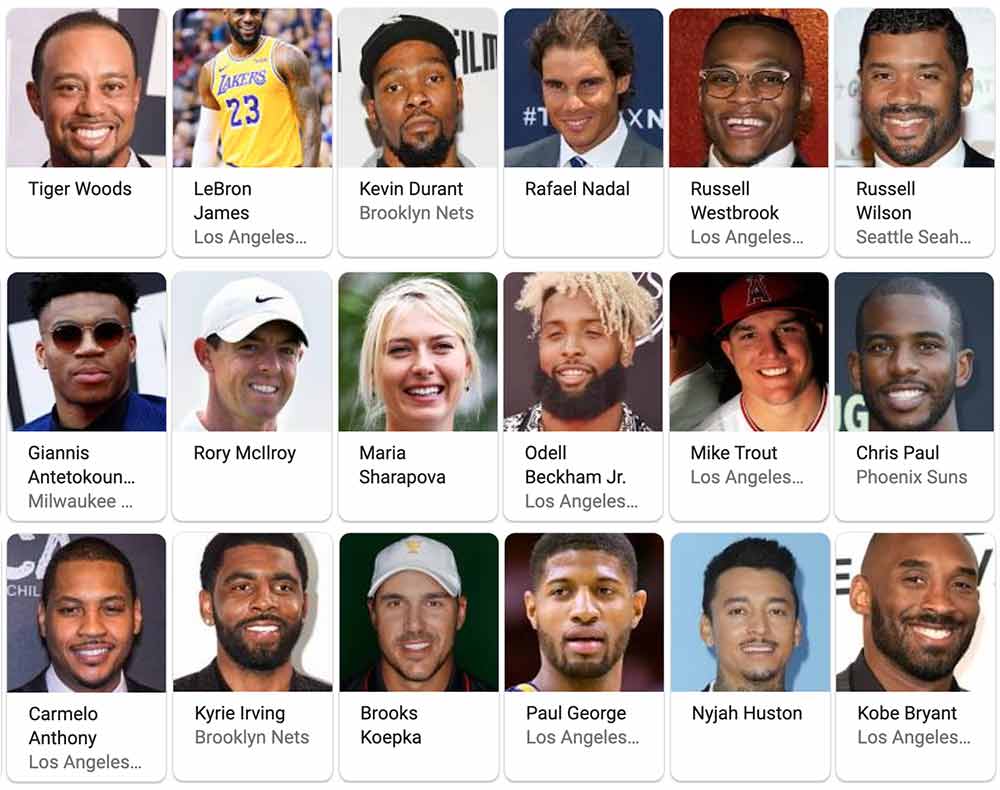
While not all Nike athletes have signed multi-million dollar deals with the brand, a few standouts have inked huge deals to represent and collaborate with Nike. These superstar athletes bring their star power and influence to an already stratospheric brand as Nike’s most notable partners.
- Michael Jordan (Basketball: $60 million/year)
- Tiger Woods (Golf: $20 million/year)
- Cristiano Ronaldo (Soccer: $20 million/year)
- LeBron James (Basketball: $15 million/year)
- Maria Sharapova* (Tennis: $8.75 million/year)
- Carmelo Anthony (Basketball: $3.5 million/year)
- Giannis Antetokounmpo (Basketball: $20 million/year)
- Russell Wilson (Football: $22 million/year)
- Rafael Nadal (Tennis: $10 million/year)
- Kevin Durant (Basketball: $28 million/year)
*Maria Sharapova is a Career Grand Slam winner and Olympic Silver Medalist. She was signed by Nike when she was 11 years old. Though her tenure with Nike ended in 2018, she topped $8 million in Nike endorsements a year at her peak.
» Related: You might like this article on What Michael Jordan can teach you about style.
What companies does Nike own? Nike owns Jordan, Converse and Datalogue, a data integration platform.
Who are Nike’s top competitors? Nike’s top competitors globally are Adidas, Puma, FILA and Anta in China.
In comparing Nike vs Adidas, which company is better? Nike owns the overall biggest share of the sportswear and gear market worldwide.
Does Nike manufacture its products? No, Nike utilizes private manufacturing partners around the world to produce its apparel, gear and shoes.
How many people work for Nike? Worldwide, over 700,000 people are employed by Nike.
What is Nike’s biggest selling shoe? Nike’s Air Force 1 is the company’s biggest seller.
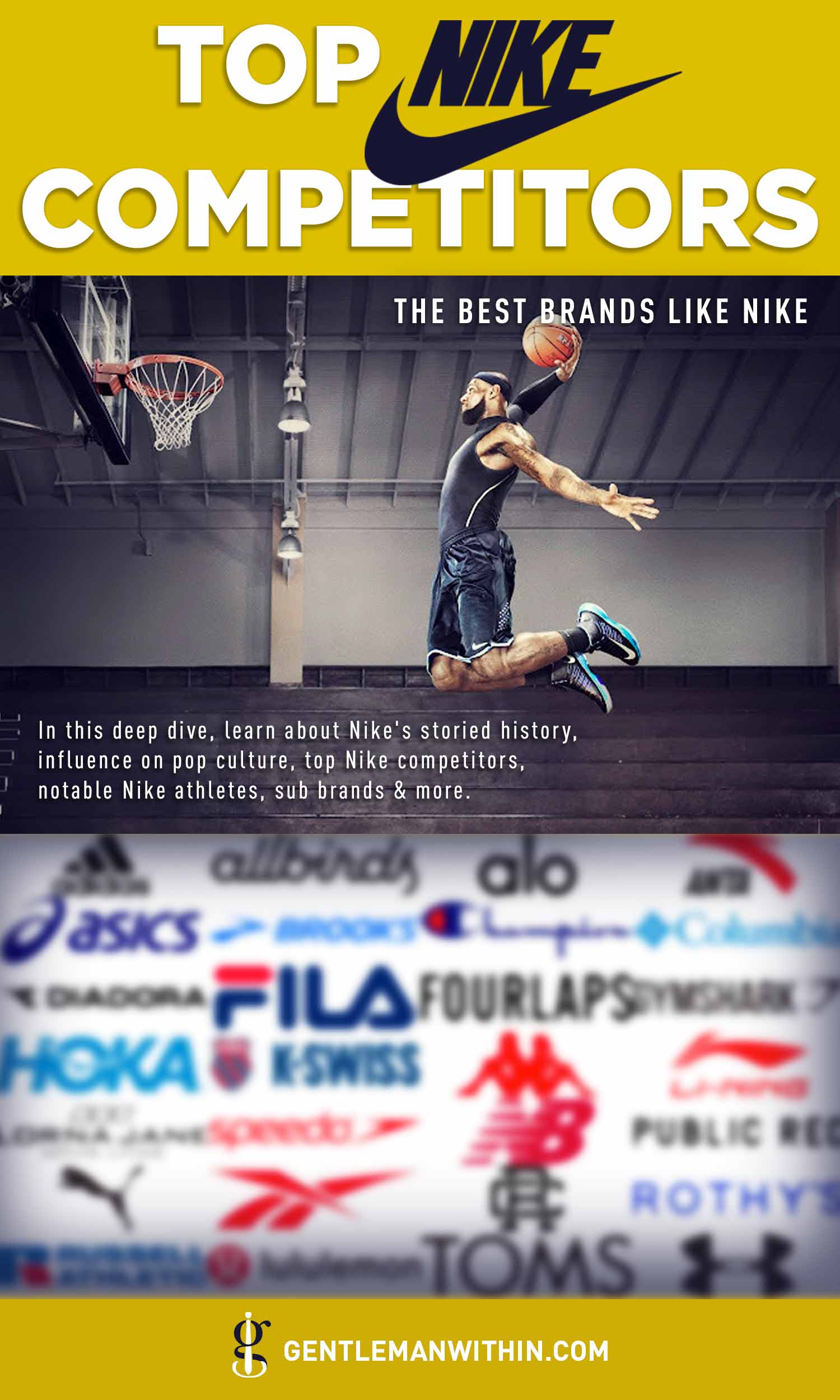
Nike or the field, who would you take?
To continue the discussion, come and join the Gentlemen Within Private Facebook Community.
Looking forward to seeing you in there.
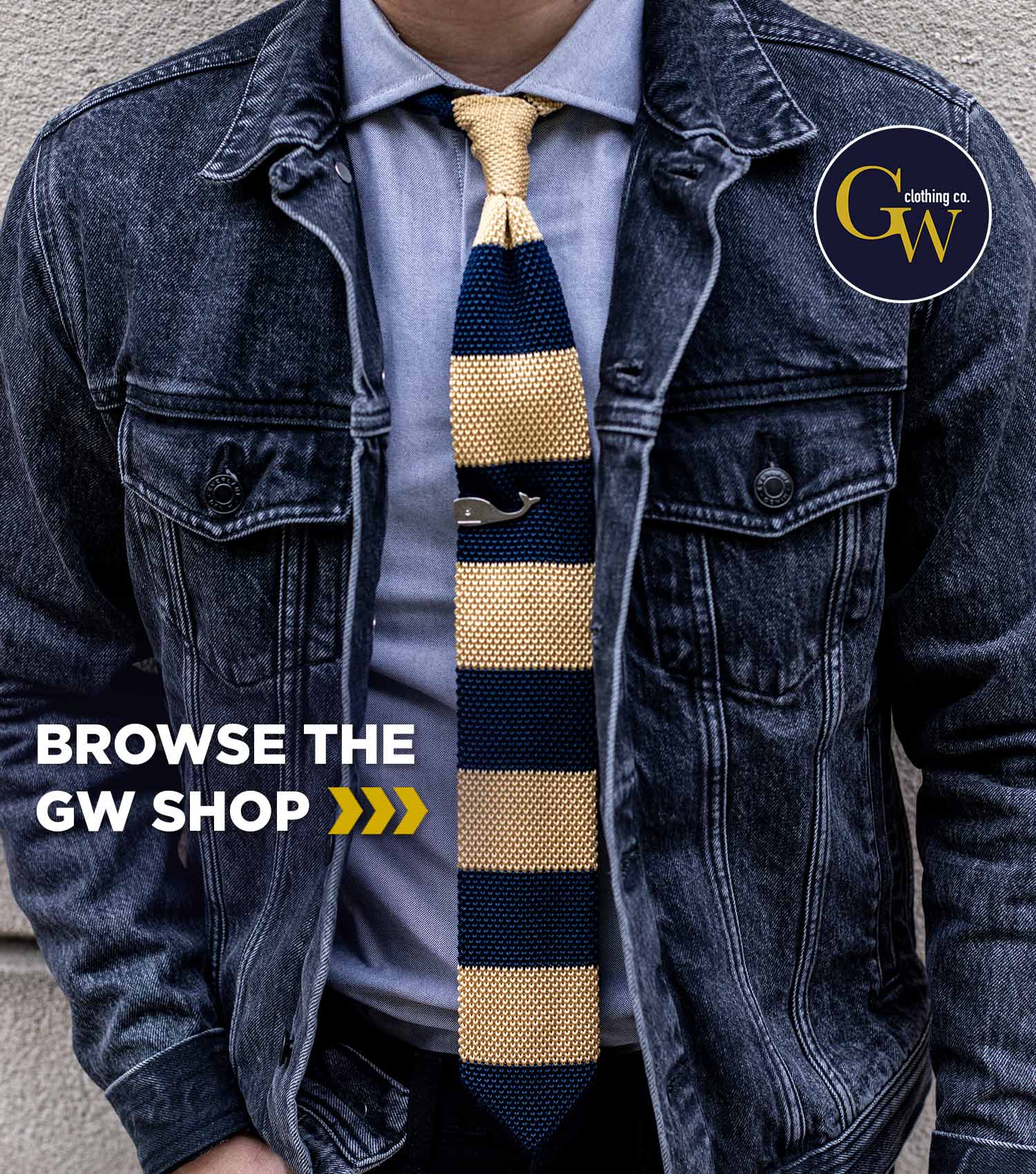


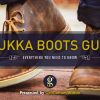

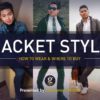

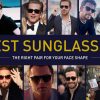
Drop a Line!